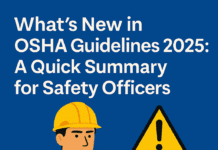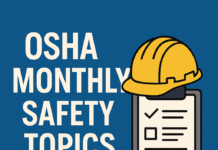
What are the OSHA Regulations?
The Occupational Safety and Health Administration (OSHA) regulations are a set of standards designed to ensure safe and healthy working conditions for employees across various industries in the United States. These regulations are enforced by the Occupational Safety and Health Administration, a federal agency under the Department of Labor.
Introduction to OSHA regulations
OSHA regulations cover a wide range of workplace hazards, including but not limited to, exposure to toxic chemicals, mechanical dangers, excessive noise levels, and unsanitary conditions. The primary goal of these regulations is to prevent workplace injuries, illnesses, and fatalities by establishing safety guidelines that employers must follow.
History of OSHA
OSHA was established in 1970 with the passing of the Occupational Safety and Health Act, signed into law by President Richard Nixon. The creation of OSHA marked a significant milestone in workplace safety regulation, as it was the first federal agency dedicated to ensuring the health and safety of workers.
Purpose of OSHA regulations
The main purpose of OSHA regulations is to protect workers from occupational hazards and ensure that employers provide a safe and healthy work environment. By setting and enforcing standards, OSHA aims to reduce the number of workplace injuries, illnesses, and fatalities.
OSHA standards and compliance requirements
OSHA regulations are divided into standards that are specific to different industries, including general industry, construction, maritime, and agriculture. Each set of standards outlines the safety requirements and compliance measures that employers must adhere to in order to protect their employees.
General industry standards
General industry standards cover a wide range of workplace hazards, including but not limited to, chemical exposure, fall protection, machine guarding, and electrical safety.
Construction industry standards
Construction industry standards address the unique hazards associated with construction work, such as falls, trenching and excavation, scaffolding, and heavy machinery operation.
Maritime industry standards
Maritime industry standards focus on the safety and health of workers in maritime settings, including shipyards, docks, and marine terminals. These standards cover issues such as confined space entry, vessel operations, and emergency response.
Agriculture industry standards
Agriculture industry standards address the specific hazards faced by agricultural workers, including exposure to pesticides, farm equipment operation, and animal handling.
Importance of OSHA regulations
OSHA regulations play a crucial role in protecting the health and safety of workers by providing guidelines for employers to follow. By complying with OSHA standards, employers can reduce the risk of workplace accidents and injuries, resulting in a safer and more productive work environment.
Key components of OSHA regulations
There are several key components of OSHA regulations that employers must address to ensure compliance and protect their employees.
Hazard communication
OSHA requires employers to communicate information about hazardous chemicals in the workplace through labels, safety data sheets (SDS), and employee training programs.
Personal protective equipment (PPE)
Employers are responsible for providing appropriate personal protective equipment, such as gloves, safety glasses, and respirators, to employees who are exposed to workplace hazards.
Recordkeeping and reporting
OSHA requires employers to maintain accurate records of workplace injuries and illnesses and report certain incidents to the agency.
Training and education
Employers must provide employees with training and education on workplace safety hazards, emergency procedures, and OSHA regulations.
Enforcement of OSHA regulations
OSHA enforces its regulations through inspections, citations, and penalties for non-compliance. The agency conducts both programmed inspections, which are scheduled in advance based on high-risk industries or specific hazards, and unprogrammed inspections, which are conducted in response to complaints, accidents, or fatalities.
OSHA penalties for non-compliance
Employers who violate OSHA regulations may be subject to fines, citations, and other penalties. The severity of the penalty depends on the nature of the violation and the employer’s history of non-compliance.
Common misconceptions about OSHA regulations
There are several common misconceptions about OSHA regulations, including the belief that compliance is optional or that OSHA only applies to large companies. In reality, OSHA regulations apply to all employers, regardless of size, and compliance is mandatory.
The role of employers in ensuring OSHA compliance
Employers play a crucial role in ensuring OSHA compliance by implementing safety programs, providing training and education to employees, and maintaining a safe work environment.
The role of employees in OSHA compliance
Employees also have a responsibility to follow OSHA regulations and report any workplace hazards or violations to their employer or OSHA. By actively participating in safety programs and reporting concerns, employees can help prevent accidents and injuries.
Benefits of OSHA compliance for businesses
Compliance with OSHA regulations not only protects employees from harm but also benefits businesses by reducing the risk of costly accidents, improving employee morale and productivity, and enhancing the company’s reputation.
Challenges in OSHA compliance
Despite the benefits of OSHA compliance, many employers face challenges in implementing and maintaining effective safety programs, such as lack of resources, employee resistance, and changing regulatory requirements.
OSHA (Occupational Safety and Health Administration) regulations are standards set by the United States government to ensure safe and healthy working conditions for employees. These regulations cover various aspects of workplace safety, including:Hazard communication: Ensuring that employers communicate potential workplace hazards to employees through labeling, safety data sheets, and employee training.
Respiratory protection: Requiring the use of respirators to protect employees from inhaling harmful substances.
Fall protection: Mandating measures to prevent falls from heights, such as guardrails, safety nets, and personal fall arrest systems.
Electrical safety: Setting standards for the safe use of electrical equipment and systems in the workplace.
Machine guarding: Requiring guards on machines to prevent employee contact with hazardous moving parts.
Personal protective equipment (PPE): Requiring employers to provide and ensure the use of appropriate PPE, such as gloves, goggles, and hard hats.
Bloodborne pathogens: Establishing measures to protect employees from exposure to bloodborne pathogens, such as HIV and hepatitis, in the workplace.
Hazardous materials handling: Setting standards for the safe handling, storage, and disposal of hazardous materials in the workplace.
Emergency action plans: Requiring employers to have plans in place to respond to emergencies, such as fires, chemical spills, and medical emergencies.
Recordkeeping and reporting: Mandating that employers keep records of workplace injuries and illnesses and report serious incidents to OSHA.
These are just a few examples of the many regulations enforced by OSHA to protect the safety and health of workers in the United States.Conclusion
In conclusion, OSHA regulations play a vital role in protecting the health and safety of workers by establishing standards for employers to follow. By understanding and complying with OSHA regulations, employers can create safer workplaces and reduce the risk of accidents and injuries.
OSHA Exam Questions and Answers
List of OSHA Standards for Safety
Unique FAQs
- Are OSHA regulations only applicable to certain industries? No, OSHA regulations apply to all industries and employers, regardless of size or type of business.
- What are the consequences of violating OSHA regulations? Violating OSHA regulations can result in fines, citations, and penalties for employers, as well as potential harm to employees.
- How often does OSHA update its regulations? OSHA regularly updates its regulations to address emerging hazards and improve workplace safety. Updates can occur annually or as needed in response to new developments.
- Can employees refuse to work in unsafe conditions under OSHA regulations? Yes, OSHA regulations protect employees’ rights to refuse to work in conditions that they believe are unsafe or hazardous.
- How can employers ensure compliance with OSHA regulations? Employers can ensure compliance with OSHA regulations by implementing safety programs, providing training and education to employees, and regularly reviewing and updating workplace policies and procedures.
























